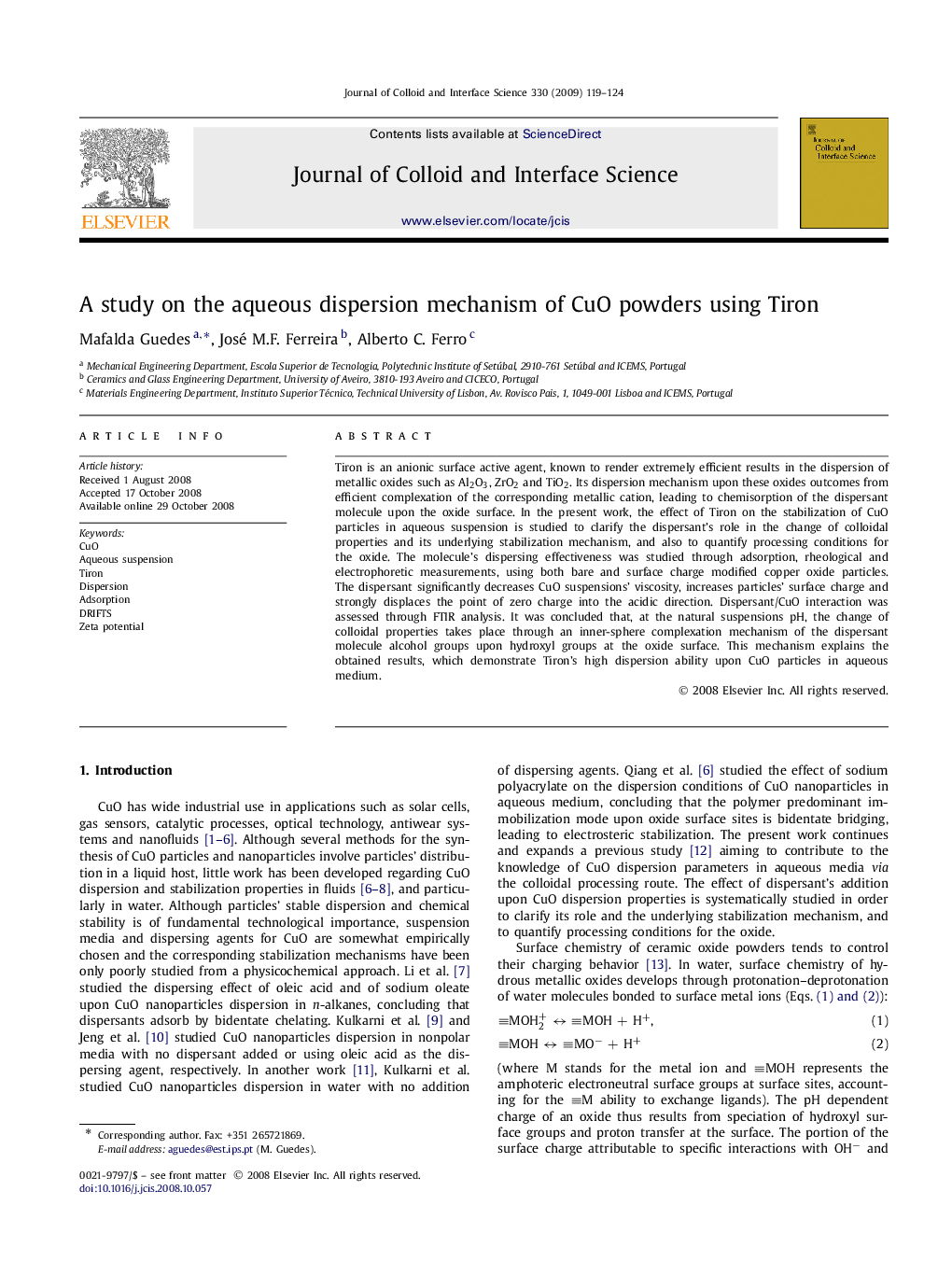| Article ID | Journal | Published Year | Pages | File Type |
|---|---|---|---|---|
| 610795 | Journal of Colloid and Interface Science | 2009 | 6 Pages |
Tiron is an anionic surface active agent, known to render extremely efficient results in the dispersion of metallic oxides such as Al2O3, ZrO2 and TiO2. Its dispersion mechanism upon these oxides outcomes from efficient complexation of the corresponding metallic cation, leading to chemisorption of the dispersant molecule upon the oxide surface. In the present work, the effect of Tiron on the stabilization of CuO particles in aqueous suspension is studied to clarify the dispersant's role in the change of colloidal properties and its underlying stabilization mechanism, and also to quantify processing conditions for the oxide. The molecule's dispersing effectiveness was studied through adsorption, rheological and electrophoretic measurements, using both bare and surface charge modified copper oxide particles. The dispersant significantly decreases CuO suspensions' viscosity, increases particles' surface charge and strongly displaces the point of zero charge into the acidic direction. Dispersant/CuO interaction was assessed through FTIR analysis. It was concluded that, at the natural suspensions pH, the change of colloidal properties takes place through an inner-sphere complexation mechanism of the dispersant molecule alcohol groups upon hydroxyl groups at the oxide surface. This mechanism explains the obtained results, which demonstrate Tiron's high dispersion ability upon CuO particles in aqueous medium.
Graphical abstractProposed surface reaction leading to bidentate chelate ring formation between CuO and Tiron dissociated molecule at moderately acid pH.Figure optionsDownload full-size imageDownload as PowerPoint slide
